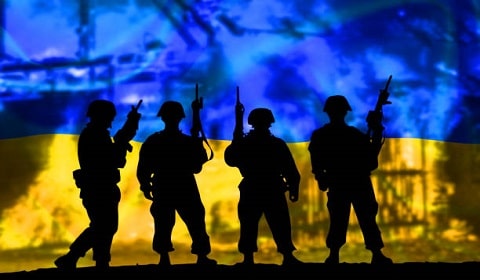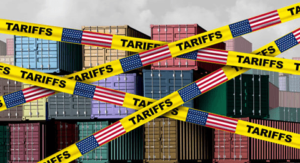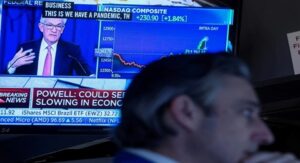
Impact of the Russia Ukraine War
The impact of the Russia Ukraine war reverberates globally, casting a long shadow over economies, food security, and geopolitical landscapes. The conflict shattered Ukraine’s economic strides, plunging its GDP and surging poverty rates, affecting millions and pushing food insecurity to alarming levels.
Agriculture, a cornerstone, bore the brunt, impacting global food security. Simultaneously, the sanctions’ impact on Russia, though substantial, hasn’t halted aggression, reshaping its economy and redirecting funds to military endeavors.
Escalating living costs and energy prices, coupled with global financial market ripples, underscore a multifaceted fallout. The war’s repercussions span far beyond borders, triggering economic upheavals and humanitarian crises, shaping a complex, interconnected aftermath.
Table of Contents
Impact of the Russia Ukraine war
The Impact of the Russia Ukraine war, initiated by Putin’s aggression against Ukraine, has unleashed a multifaceted and far-reaching impact that extends beyond the battlefield. The economic fallout of this conflict has been catastrophic, with devastating consequences not just for Ukraine and Russia but reverberating across the global economy.
Examining the aftermath reveals a complex web of challenges posed by the Impact of the Russia Ukraine war, demanding attention and resolution to alleviate immense suffering, poverty, food shortages, and a burgeoning cost of living crisis. This conflict’s repercussions necessitate international collaboration to address the profound socio-economic challenges left in its wake.
1. Ukraine’s Economic Turmoil
Impact of the Russia Ukraine war is catastrophic. For Ukrainians, incomes have plunged, with poverty soaring from 5.5% to 24.2%. in 2022 according to the World Bank. 7.1 million more people face poverty, erasing 15 years of progress. Despite being a top crop exporter, Ukraine grapples with severe food insecurity, affecting one in three households, rising to half in some regions. Russia’s destruction of infrastructure led to job losses, halting economic activities, including agriculture.
Household earners’ deaths exacerbate deprivation. UN figures cite 26,717 civilian casualties, likely an underestimation due to conflict zones’ complexities. US reports paint a grimmer picture with nearly half a million casualties, 60% Russian. The war’s toll lingers as a haunting tragedy.
2. Impact on Agriculture
The war in Ukraine devastated its agriculture, crippling the ‘breadbasket of Europe.’ The Impact of the Russia Ukraine war on the region was profound. Once major global producers, Ukraine and Russia suffered. Pre-war, 55% of Ukraine’s land was fertile farmland, employing 14% of its people and yielding 45% of its exports ($22.2 billion).
Despite a partial recovery with the Black Sea Grain Initiative in July 2022, Russian invasion hindered ports, impeding exports. By July 2023, 33 million tons were exported, boosting global food security. However, Russia’s withdrawal in July 2023 dealt a severe blow. Without peace, Ukraine faces continued agricultural decline, jeopardizing exports and global food stability. Reinforcing production is crucial to avert a deeper crisis.
3. Humanitarian Crisis and Refugees
The war in Ukraine has displaced six million, comprising 15% of its pre-war populace, impacting the nation’s labor force. Impact of the Russia Ukraine war Post-conflict, a significant worker scarcity looms. Yet, forced migration, while challenging, presents an economic opportunity. It offers vital refuge, rekindles education for children, and fosters a promising future. Adults may embrace language acquisition and skill development in their new homeland, leveraging their potential.
This migration’s aftermath extends beyond workforce deficits, highlighting a chance for personal growth and integration into new communities, showcasing resilience amid adversity. Ultimately, amid the challenges, it bears the potential for a reinvigorated societal fabric built upon adaptability and aspiration.
4. Prospects for Rebuilding
Ukraine’s economic future hinges on the war’s duration and the impact of the Russia Ukraine war. Yet, recovery remains feasible, showcasing resilience amid adversity. In 2022, 79% of businesses faced closure, dropping remarkably to 32% by year-end, despite massive devastation caused by the conflict. The nation’s digitalization upheld vital public services amidst turmoil, circumventing bureaucratic collapse post-Covid. However, achieving full recovery demands unprecedented governmental dedication.
Structural reforms, akin to Europe’s, become imperative—embrace low-carbon production, enhance energy efficiency, and leverage tech advancements for governance. The impact of the Russia Ukraine war has magnified these challenges. EU membership, though uncertain, holds promise for economic revitalization. Ukraine’s plea to join the EU amid invasion underscores aspirations for a brighter future, potentially bringing substantial economic benefits to the nation.
5. Russian Economic Fallout and Sanctions
The impact of sanctions on Russian aggression and the ongoing Russo-Ukrainian War remains contentious. While some argue sanctions haven’t halted aggression or prompted negotiations, others cite a significant effect on Russia’s economy. Initial forecasts overestimated the economic decline caused by sanctions, later revised by institutions like the World Bank and IMF. Comparing actual GDP to pre-sanction projections suggests a 7-10% reduction.
Evidence indicates sanctions damaged Russia’s economy from mid-2022, with a soaring federal deficit. By 2023’s end, financial strain could threaten Russia’s regime. Moreover, the conflict in Ukraine has stretched Russia’s resources thin. Though not war-ending, sanctions limit military replacement and funding. The true extent of sanctions’ power and Russia’s future hinge on their economic repercussions amidst the Russo-Ukrainian War.
6. Shifts in Russia’s Economy and Social Dynamics
Russia’s economic landscape post-invasion, notably impacted by the Russo-Ukrainian War, displays nuanced changes: while overall manufacturing dipped marginally by 1.7%, car production plummeted to less than 25% of pre-invasion levels due to Western brands exiting. This shift witnessed a surge in war-related goods like metals, textiles, and medical products. Despite trade restrictions, Russia’s capacity enables sustained production of basic items.
GDP statistics mask the war’s toll on citizens, with an estimated 120,000 Russian troops lost. Military emphasis reallocates funds from public services: 2023’s budget signals a 50% hike in ‘security’ (including military) spending, accompanied by cuts in health (9%), education (2%), infrastructure (24%), and industrial (19%) spending compared to 2022.
7. Amplifying Global Food Insecurity and Energy Crisis
The global conflict’s impact on businesses and consumers is evident in the stock market. Firms tied to Russia faced significant share price declines post-invasion, exemplifying the broader consequences of the Russo-Ukrainian War. The Impact of the Russia Ukraine war is particularly noteworthy in this context. Research by the London School of Economics reveals a 1.53% average drop in countries’ stock indices due to their trade links with Russia, underscoring the war’s economic ramifications.
Pre-war, firms had a 0.25% average dependence on Russia. European nations bore the brunt, with East European countries hit via trade and West European ones through ownership ties. Contrastingly, less-connected countries like the US and China, beneficiary in Ukraine War, faced milder effects. This signals a prolonged financial strain for Europe, emphasizing its enduring repercussions on the international stage amidst the escalation of the Russo-Ukrainian War.
Bottom Line
The Russo-Ukrainian War has triggered a domino effect of economic crises, exacerbating poverty, food shortages, and escalating living costs. The Impact of the Russia Ukraine war, while primarily affecting the region, has also led to geopolitical tensions and economic instability globally. While sanctions have dented Russia’s economy, the broader impact extends globally, necessitating concerted efforts to rebuild shattered economies, mitigate humanitarian crises, and reimagine geopolitical and economic ties for a more stable future.





